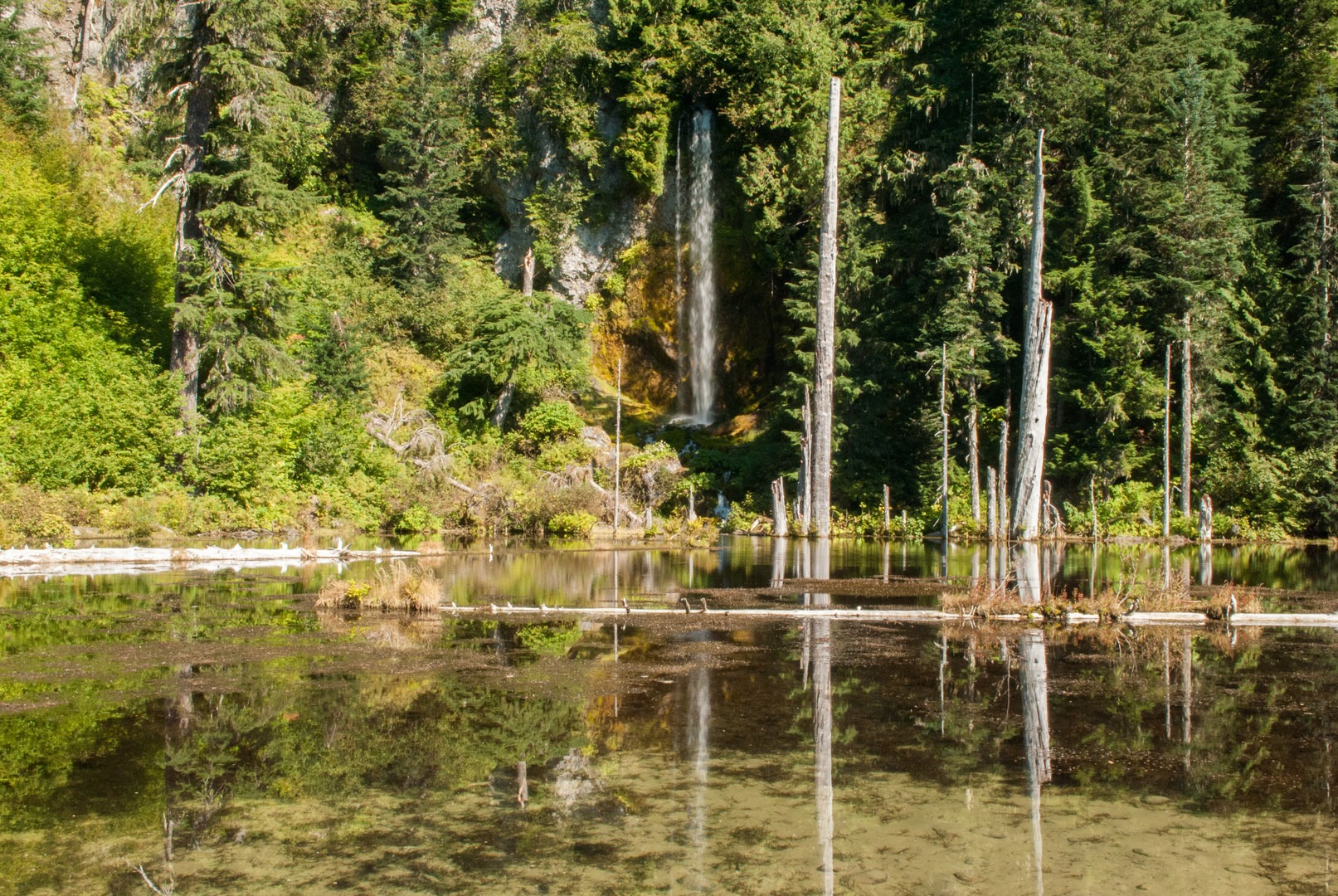The May 18, 1980 eruption of Mount St. Helens forever changed the landscape around the mountain. However, most of the blast impacted the north side of the mountain, leaving the south side relatively untouched. And it is on the mountain’s south side, not far from June Lake, where hikers planning to summit the rim begin their trip.
This hike begins at the June Lake Trailhead and parallels June Creek, with several side trails near the trailhead that lead to the creek bed and views of the south side of Mount St. Helens. The trail climbs gradually through the forest, and offers occasional openings and views along the way.
After crossing the creek on a small bridge, enter a wide, sandy plain with small shrubbery, the site of an ancient mudflow. Lava flows on the south side of the mountain are visible to the north. To the east lies the June Lake basin, surrounded by old-growth western hemlock covering the cliff ridge around the lake.
A 40-foot waterfall along the edge of this shallow lake begins as a spring just above the edge of a lava field. After leaving June Lake, the trail switchbacks up to connect with the Loowit Trail. From here, you can head in either direction through lava fields. The 30-mile Loowit Trail circumnavigates Mount St. Helens. Turn right at the junction to hike through the lava formations known as the worm flows; these were formed by successive lava flows that rolled and solidified, building up layers of lava over time. Return the same way.
If you have the time, turn left at the Loowit Trail junction and hike for about 1.3 miles through large, boulder-filled lava fields to Chocolate Falls, named for the ash-filled water that resembles chocolate milk.


























Comments
Sign In and share them.